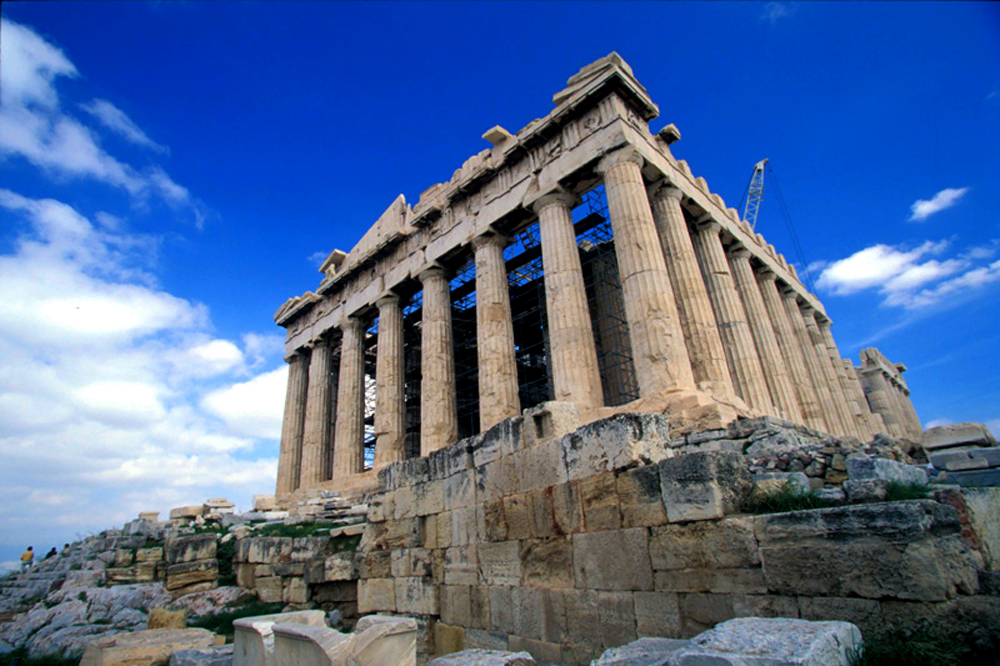Parthenon Once a Riot of Color

If the ancient Greeks sold kitschy postcards to tourists 2,000 years ago, they would have depicted much different views of the popular sites that visitors flock to today.
Archaeologists say many of the stony ruins looked much different in their prime. Many were brightly painted in hues that have faded with time and, in some cases, with forced removal.
The Parthenon in Athens was once covered in colorful splashes of paint, for example.
It has long been known that the formidable marble temple, which sits atop the capital city’s Acropolis citadel, had been painted. New tests, performed by Greek archaeologist and chemical engineer Evi Papakonstantinou-Zioti, confirm the use of brilliant shades of red, blue and green.
Traces of the colors were found during a laser cleaning done as part of ongoing restorations to the temple, built in 432 B.C.
Simple weathering caused the colors to fade over time, said Sara Orel, associate professor of art history at Missouri’s Truman University.
“Weathering through the bleaching of the sun, blowing of the sand, etc., and more modern pollution-caused damage,” are the major culprits, Orel told LiveScience. She sees this through much of Egypt, where the carved designs on most ancient buildings were painted to make them stand out more prominently against lighter stone. Today those colors are barely visible.
Sign up for the Live Science daily newsletter now
Get the world’s most fascinating discoveries delivered straight to your inbox.
One renowned institution comes under fire for how it may have helped the Parthenon’s aging process along.
Some of the Parthenon’s most intricate carvings now reside in a specially-built wing of the British Museum in London. The Elgin Marbles, as they’re jointly dubbed, may have been stripped of some of their remaining color for aesthetic purposes when they arrived in London in the early 19th-century and again over subsequent cleanings, experts say.
One clean-up in the 1930s was particularly devastating. A historian at Cambridge University claims museum representatives used steel wool and chisels for the task—hardly the stuff of sophisticated conservation efforts employed today. The thinking is that the museum reps were operating under the same assumption held by most of the modern public: that the sculptures were originally a bright white.
“Michelangelo's sculpture wasn't painted, and great classical sculpture was thought not to be either, so they improved the stuff,” Orel explained. “At the time it was not quite the horrific thought that we would make it now.”
Ian Jenkins, writing in a paper released by the British Museum in 2001, stops short of saying the mistakes in the 1930s were responsible for turning the Elgin Marbles from a Technicolor spectacle into the blander grey-white collection currently on display, however.
“I estimate that when the sculptures entered the Museum, less than 20 percent of their overall surface retained its coating, of which in the 1930s about half was removed,” Jenkins writes. “But natural weathering is by far the single most important factor determining the surface and color of the sculptures as we see them today.”
- Typhoid Fever Behind Fall of Athens
- Newfound Greek Site is Really Ancient
- Massive Eight-Chamber Tomb Found In Greece
- Greek Shipwreck from 350 BC Revealed










